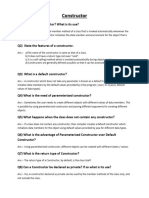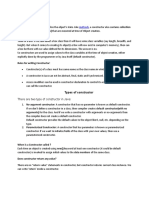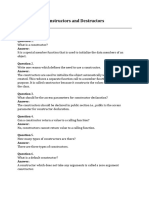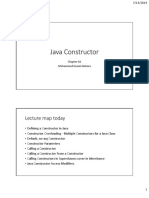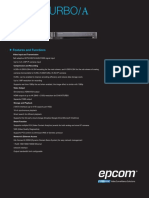0% found this document useful (0 votes)
24 views5 pagesJava Theory QuestionsC10 Constructors
Uploaded by
ishanjadhav077Copyright
© © All Rights Reserved
We take content rights seriously. If you suspect this is your content, claim it here.
Available Formats
Download as DOCX, PDF, TXT or read online on Scribd
0% found this document useful (0 votes)
24 views5 pagesJava Theory QuestionsC10 Constructors
Uploaded by
ishanjadhav077Copyright
© © All Rights Reserved
We take content rights seriously. If you suspect this is your content, claim it here.
Available Formats
Download as DOCX, PDF, TXT or read online on Scribd
/ 5





